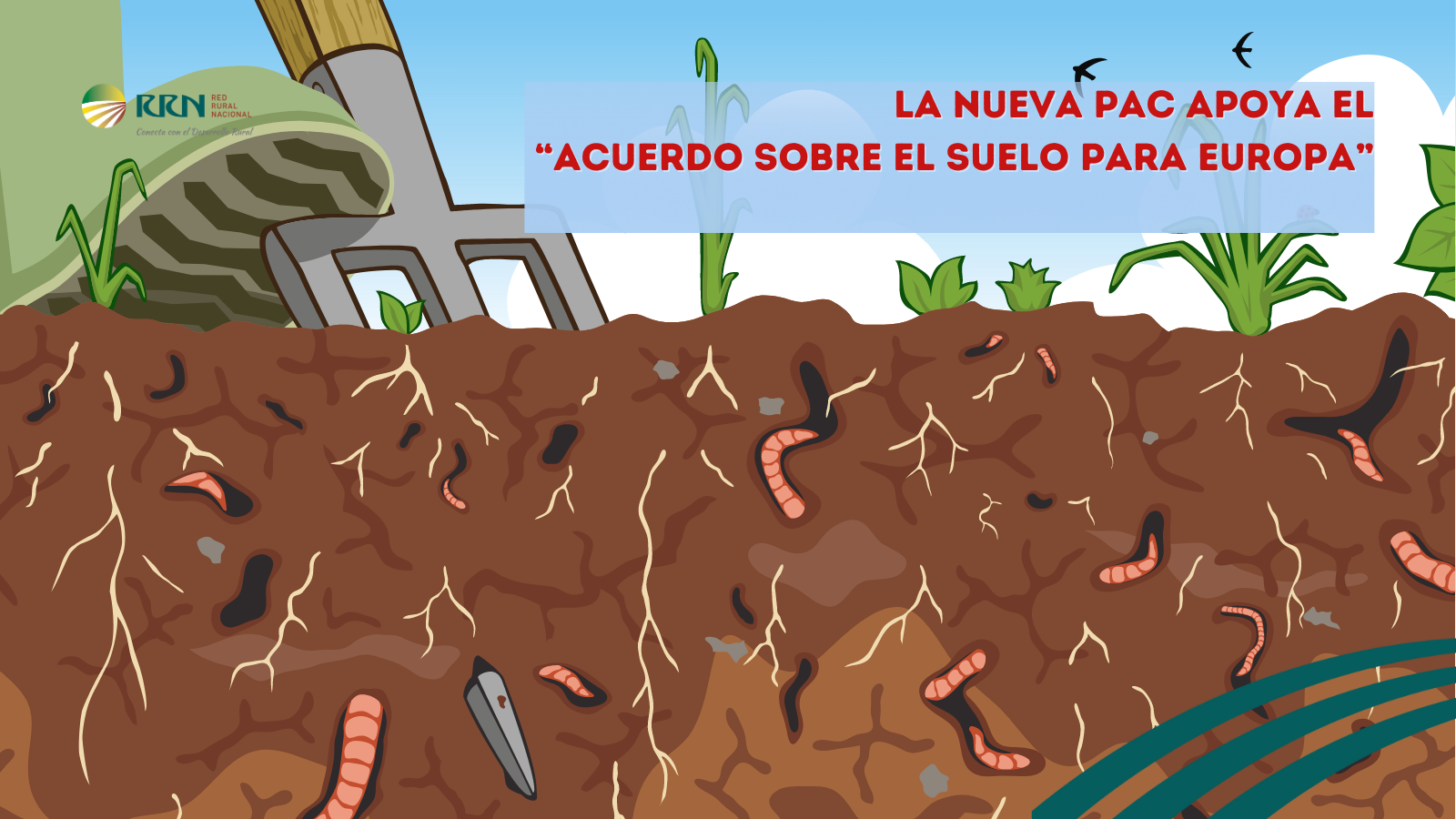
17 de March de 2023
The main objective is to establish 100 "living labs" to transition to healthier soils by 2030 through the development of knowledge and real-world solutions to soil problems.
- The European Union's mission "A Soil Deal for Europe" aims to build an effective framework for soil protection and restoration.
- The new CAP will focus on promoting agricultural practices that boost carbon agriculture.
- The “EU Soil Strategy for 2030” announces a new Soil Health Act for 2023 to ensure soil protection and health.
Soils are a scarce and non-renewable resource. It takes hundreds of years to generate one centimeter of topsoil, which can be consumed in a couple of years or less. Soils are therefore the basis for nutritious and healthy food, but they are also safeguards of the environment: they regulate water cycles, support biodiversity and nutrient cycles, help mitigate the climate, and contribute cultural aspects to society through their landscapes. However, between 60 and 70% of all soils in Europe are unhealthy due to poor management practices, pollution, climate change, and building on them.
In response to this, the European Union launched the "Soil Deal for Europe" Mission . EU Missions are strategies within the Horizon Europe research framework programme to address major societal challenges through various actions and disciplines, aimed at achieving a measurable objective and within a set timeframe. In the case of the "Soil Deal for Europe," it falls within Cluster 6 "Food, Bioeconomy, Natural Resources, Agriculture and Environment" of the Horizon Europe Programme.
Mission Objectives
The main objective of the 'A Soil Deal for Europe' Mission is to establish 100 living labs to lead the transition to healthier soils by 2030. These labs are tasked with creating knowledge and real-world solutions to soil problems.
Their findings should contribute to:
- Reduce desertification
- Conserve soil organic carbon reserves
- Stop soil sealing and increase urban land reuse
- Reduce soil pollution and improve soil restoration
- Prevent erosion
- Increase soil biodiversity
- Reducing impacts on European soils
- Raise awareness among the population about the vital importance of soils
The Mission is aligned with the European Green Deal 's objectives of sustainable agriculture, climate resilience, biodiversity, and zero pollution, as well as with the Long-Term Vision for Rural Areas , which is integrated into the new CAP as it reflects the interests of the agricultural and rural pillars.
The new CAP and soils
More specifically, the concept of ecoregimes within the new CAP is intended to contribute to the objectives of the European soil strategies. Ecoregimes are specific practices that cover all possible land uses, i.e., permanent and temporary pastureland, arable cropland, and permanent cropland.
By adopting these practices—voluntarily by farmers and additionally compensated by the new CAP—they can choose from the practices most relevant to their farming model. Only one practice can be counted on a single hectare, and although in some cases two practices can be carried out on the same plot (for example, rotation and direct sowing), the aid is received only once.
Thus, you can choose between:
A) Low-carbon agriculture : oriented to improve the structure of soils , reducing erosion and desertification, increasing their carbon content, and reducing emissions. This can be achieved through extensive grazing (in permanent pastures and rangelands); direct seeding (in croplands); spontaneous or sown vegetation cover (in woody crops), or inert cover (in woody crops).
B) Agroecology : aimed at promoting biodiversity associated with agricultural spaces, landscapes, and the conservation and quality of natural resources, water, and soil. This practice involves cultivating crops through biodiversity islands or sustainable mowing (in permanent pastures and rangelands); crop rotation with improving species (in croplands); or the establishment of biodiversity areas or water management (croplands and permanent crops, including woody crops).











